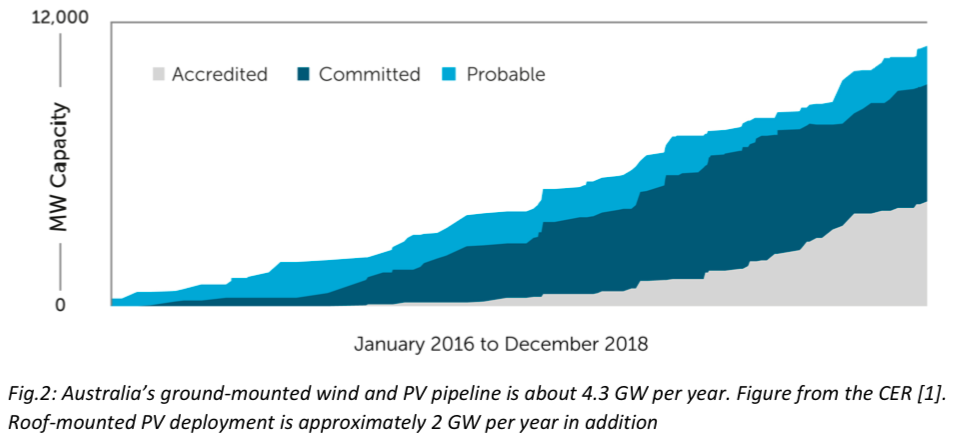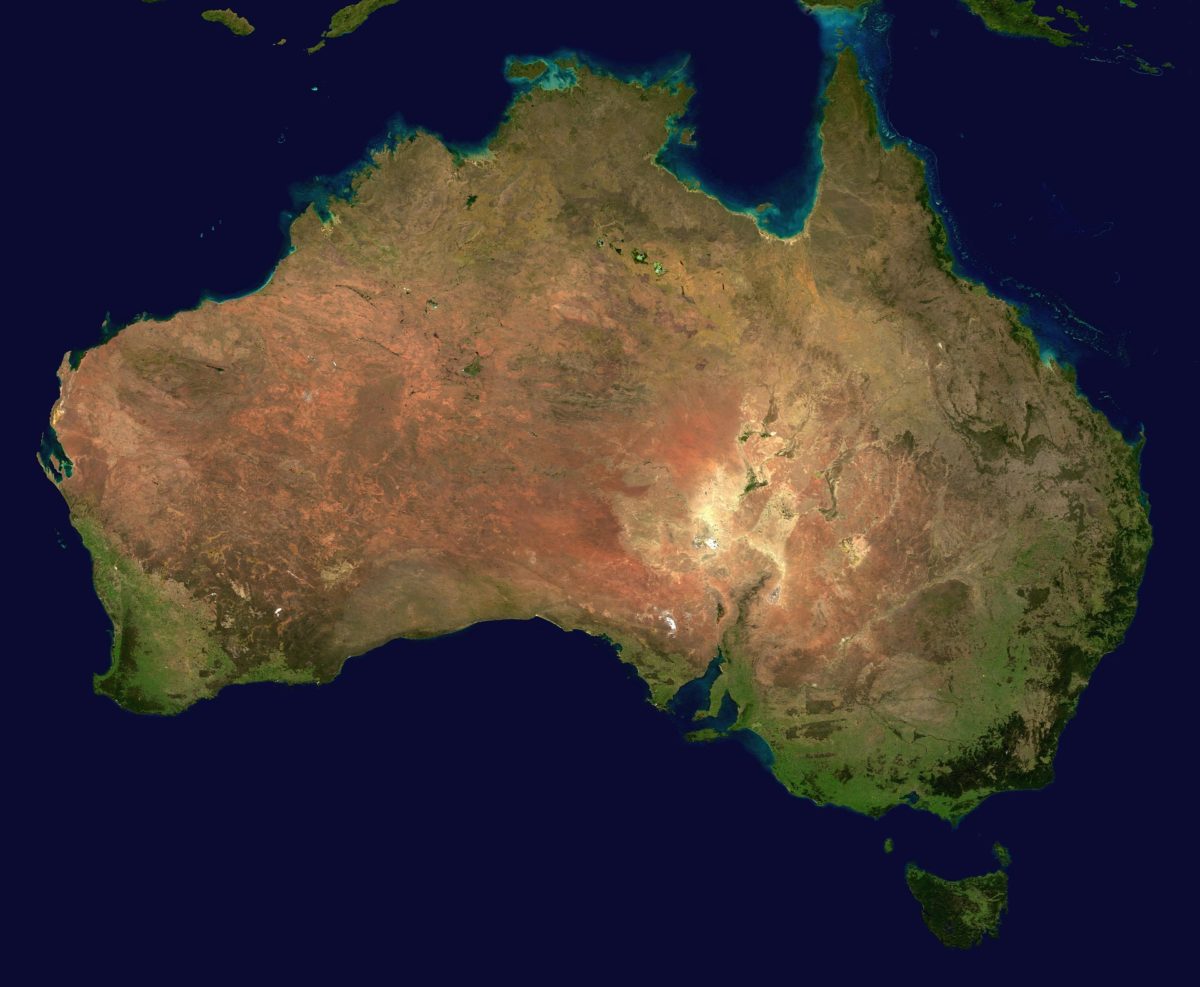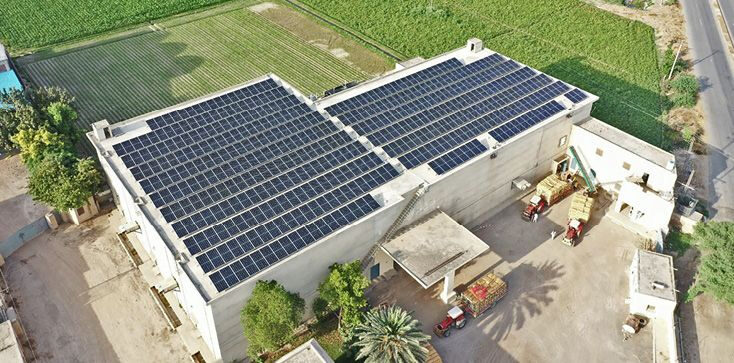From pv magazine Australia.
A study from the College of Engineering & Computer Science at the Australian National University (ANU) which found the country is on track for 50% renewables by 2024 and will meet its Paris Climate Accord commitments from the electricity sector alone, has drawn criticism and praise from unlikely quarters.
The study, published today, was led by solar PV technology pioneer Andrew Blakers, with fellow researchers Matthew Stocks and Bin Lu.
“To meet our Paris target, using our assumptions, we need to get to about 55% renewables,” Blakers told pv magazine Australia. “[The] status quo deployment rate of renewables gets us there in 2025 in the absence of big changes elsewhere in the economy. It will be difficult to meet our Paris targets without a large contribution from renewables. Fortunately, the cost of renewables continues to fall and the net cost of installing much renewables will be approximately zero.”

The federal government was quick to seize on the findings: “The ANU research confirms the government's position: that we will meet our Paris target [at] a canter,” said energy minister Angus Taylor in a statement. “The research also recognizes the need for investment in new, dispatchable generation and storage.”
That joint ministerial statement – with environment minister Melissa Price – pointed to “significant demand and supply pressures” in the electricity sector this summer, despite record renewable deployment.
“The government is backing 24/7 reliable power by underwriting new electricity generation,” added the announcement. “This will improve competition, increase supply and reduce wholesale prices. The very strong response to the government’s Underwriting New Generation Investments program demonstrates there is no shortage of willingness to invest in Australia’s future energy supply.”
However, as Blakers noted, the 50% renewable share and Paris commitments will only be achieved if the current high level of renewable deployment continues.
Renewables sector weighs in
In response to the ANU study, Australian renewable energy association the Clean Energy Council (CEC) said current levels of solar and wind installation are being fostered by the Renewable Energy Target – a target that “has been achieved”.
“The reality is that the federal government’s current approach to the energy sector is undermining confidence in future investment, which is essential to reduce emissions across the energy sector and the entire economy,” said CEC chief executive Kane Thornton in a statement. “The clean energy sector has the potential to make a huge contribution to reducing both emissions and power bills, as suggested by the ANU. But one of the biggest drivers of investment – the national Renewable Energy Target – has now been achieved. There is nothing to replace it.”
Storage, interconnection and demand response
The ANU study found stabilizing Australian grids with such high levels of renewable penetration is “straightforward”, using technologies already being deployed today. A combination of energy storage technologies – including batteries, electric vehicle capacity and pumped hydro – alongside increased interstate interconnection and demand response, would be sufficient to secure the electricity supply with high levels of solar and wind.
“The cost of hourly balancing of the Australian electricity grid is modest: about $5/MWh (US$3.55) for a renewable energy fraction of 50%, rising to $25/MWh for 100% renewables,” the ANU report authors wrote.
The CEC observed the deployment of such storage and interconnection technologies, including the Snowy 2.0 plan and Hydro Tasmania Battery of the Nation project, would require policy support and investment certainty.
“None of this will happen by accident,” said the CEC’s Thornton. “It needs planning, consultation and political leadership. The current lack of federal government climate policy, combined with ad-hoc market interventions, risks squandering the amazing opportunities outlined by the ANU.”
This content is protected by copyright and may not be reused. If you want to cooperate with us and would like to reuse some of our content, please contact: editors@pv-magazine.com.




Interesting that the (technologically) conservative Blakers team are already counting V2G as a shovel-ready storage solution. I suppose in one sense it is: but it needs a lot of policy and regulatory support to happen at scale. On the other hand they leave out P2G. This does need more work to become shovel-ready, but it’s engineering not fundamental science, and is very likely to happen given the level and quality of German and Japanese R & D. The good news for Australian consumers is that you only add non-traditional technologies if they lower system costs compared to the conservative baseline solution. Adieu to cargo-cult handwringing over unspecified breakthroughs.
The adoption by the people of Australia will be the deciding factor in a robust and distributed grid. TESLA wants to install around 5KW usable energy storage at 1,000 homes to create a VPP (Virtual Power Plant). Some of the rest of the World are concentrating on “utility scale” solar PV or wind generation. The rote one way electric utility model of centralized generation with distribution over power corridors is so inefficient as to be laughable. The public at large are paying for these inefficiencies on every electric bill. The political climate in Australia seems to have actually made personal solar PV on one’s home cheaper than some countries. One article claimed that solar PV in Australia was around $1.38 per watt installed. In the U.S. it has been published that it costs from $2.70 to $2.50 a watt installed depending on the grid service area of the country.